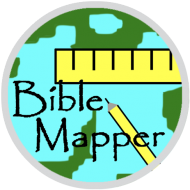As the most tangible symbol of the Lord’s presence among the Israelites, the Ark of the Covenant played a central role in the worship and religious life of Israel until it was lost or destroyed during the Babylonian destruction of Jerusalem in 586 B.C. (2 Kings 25:1-21; 2 Chronicles 36:17-21; Jeremiah 39:1-10; 52:1-30). The very […]
Category Archives: Exodus & Conquest Period
Land Unconquered by the End of Saul’s Reign
Joshua 13:1-6; Judges 1:21-36 Though Numbers 32 and Joshua 13-20 carefully detail the boundaries of each Israelite tribe’s allotted land (see map), much of this land was still occupied by Canaanites, and the Israelites often struggled to establish dominion over their inheritance. In particular, the lands along the Mediterranean Sea, in the plain of Bashan, […]
Borders of the Promised Land
The borders of the Promised Land are described by Moses in Numbers 34 (see also Deuteronomy 1:1-8), and hundreds of years later during the Judean exile in Babylon the prophet Ezekiel essentially repeated this same description as he looked ahead to the restored kingdom of God’s people (Ezekiel 47:13-23). The borders included the land of […]
Rainfall in the Ancient Near East
Throughout biblical history, one of the most tangible demonstrations of the Lord’s goodness to his people is seen in his provision of rain (Leviticus 26:4; Deuteronomy 11:11-17; 28:12; 1 Samuel 12:17-18; 1 Kings 8:35-36; 2 Chronicles 6:26-27; 7:13; Ezra 10:9; Job 5:10; 37:6; Psalm 68:9; 135:7; 147:8; Isaiah 5:6; 44:3; Jeremiah 3:3; 5:24; 10:13; 14:4-22; […]
Aram and the City of Damascus
Throughout the Old Testament the term Aram is used to reference various people groups inhabiting the Levant, and their political power and loyalties changed frequently over the centuries. The Bible first mentions the people of Aram in the Table of Nations and designates them as descendants of Shem (Genesis 10:22-23). Later Abraham traveled with his […]
